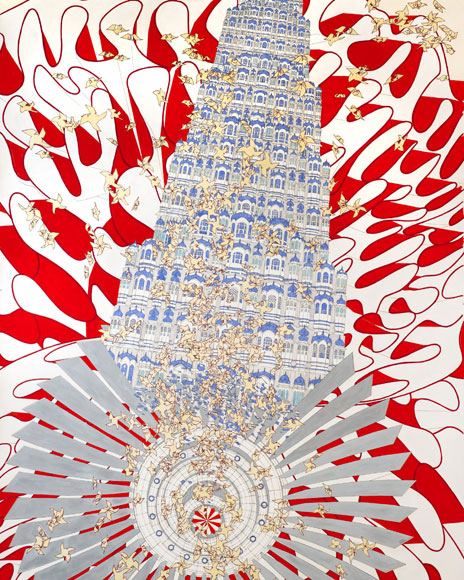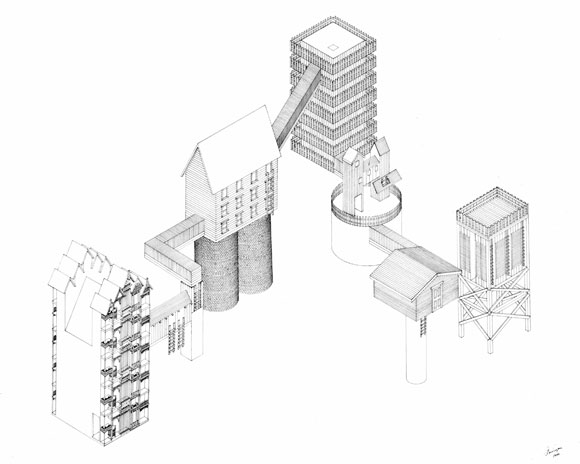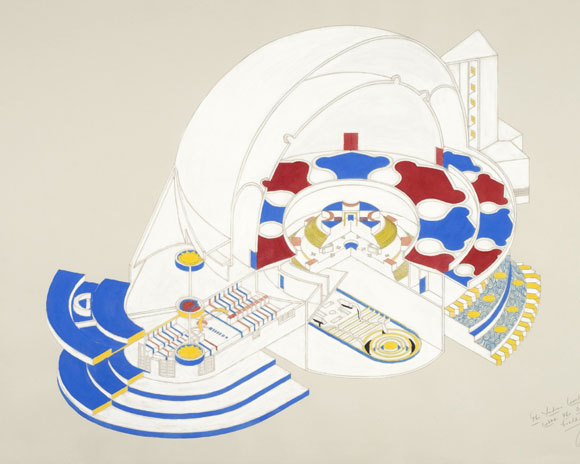Alice Aycock Drawings Render the Impossible
Alice Aycock, Rock, Paper, Scissors (India ’07), 2010. Watercolor and ink on paper. 95 11/16 x 59 ½. Miami Art Museum. Gift of Jerry Lindzon.
“My drawings incorporate the fantastical, creating a mental picture, a virtual space that the viewers can project themselves into,” says
Alice Aycock
. The sculptor, installation and environmental artist is presenting “Alice Aycock Drawings: Some Stories Are Worth Repeating,” an exhibition in two venues.
Part one, on view through July 13 at the
Parrish Art Museum
in Water Mill, NY, consists of 55 drawings documenting the artist’s work from 1984 to the present. Part two is displaying concurrently at the
Grey Art Gallery
in New York, and it spans 48 drawings, sculptural maquettes, and photo documentation from 1971 to 1984, the artist’s early years.
Alice Aycock, Project Entitled “I Have Tried to Imagine the Kind of City You and I Could Live in as King and Queen”—Isometric view, 1987. Black ink on paper. 54 1/2 x 73.
Aycock emerged on the New York art scene in the 1970’s. She traces her interest in art and much of her early inspiration from the wealth of visual stimulation she found while working at the libraries at
Hunter College
throughout her time in graduate school. The variety of images and cultures she discovered during this time comes through in her drawings. Egyptian hieroglyphics, Mesopotamian cuneiform, Native American pictographs, and Chinese characters transform into architectural elements, intertwining with more structural elements. The artist recognizes that her early work was more ordered, but beginning in 1984, her pieces took a turn toward whimsy.
For an artist well-known for her large-scale sculptural pieces, why stage an exhibition of primarily 2-D works? For Aycock, the answer is simple. “Drawings aren’t bound by the physical—the imagination can run freely.” The results push the mind to reconsider the limits of possibility.
Alice Aycock, The Indian World View—With the 8 Black Fields, 1985. Colored pencil, watercolor on paper 30 ½ x 44 ½.





